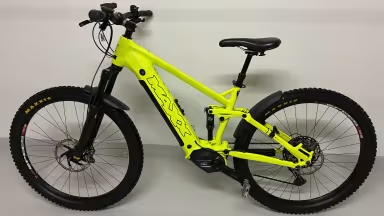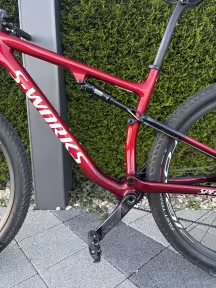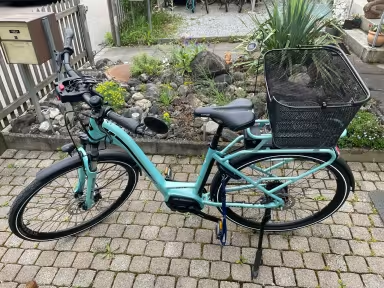E-Bike Frameset
0 Frameset
Unfortunately with the selected filter no matching bike could be found. We have several options for you.
Buying advice for: Race & Triathlon: Frameset
Frame material
E-bike road bikes generally use similar frame materials to conventional road bikes. Aluminium frames are a cheaper alternative to carbon and still offer good rigidity and durability. Aluminium frames offer excellent value for money and are a popular choice for e-bike road bikes. Carbon fibre is very popular for high-end road bikes, including e-bike road bikes. Carbon frames are light, stiff and offer excellent vibration damping, resulting in a smooth and efficient ride. Steel frames were the standard choice for road bikes for a long time before carbon and aluminium became popular. Steel frames offer a smooth ride, high strength and durability. However, they tend to be heavier than aluminium and carbon frames and are less commonly used on modern e-bike road bikes. Titanium frames are a luxurious option for road bikes, offering a unique combination of strength, lightness and durability. Titanium frames are lighter than steel and offer a smoother ride, but are often more expensive than aluminium and carbon frames.
Frame types
There are different types of e-bike road bike frames, which can vary depending on design, construction and intended use. Stiff frames offer direct power transmission, which is particularly advantageous when sprinting and going uphill. They are often made from high-quality materials such as carbon to maximise stiffness while minimising weight. Comfort frames, on the other hand, are designed to offer riding comfort by absorbing vibrations and bumps from the road. They often have a slightly more relaxed geometry with a longer head tube. Aero frames are specially designed to maximise aerodynamics. They have stretched tubes, hidden cable routing and other aerodynamic features to minimise drag and maximise speed. Choosing the right frame depends on various factors, including personal preference, riding style, area of use and budget.
Geometry
E-bike road bikes can have different frame types that differ in their geometry and construction. Road bike geometry has a traditional frame option with a steep seat tube and a short wheelbase. This geometry provides an aggressive riding position that is optimised for fast and powerful rides. Frames with endurance geometry are designed for longer rides and more comfort. They often have a slightly longer head tube and a slightly more relaxed steering angle, which enables a more upright riding position and reduces pressure on the neck and back. In addition to these two options, there are also so-called aero frames, which are specially developed to maximise aerodynamics.
Size
The size of an e-bike road bike frame is often measured by the length of the seat tube or the frame height. The frame height is usually measured in centimetres and refers to the length of the seat tube from the bottom bracket to the top of the seat tube where the saddle is mounted. The correct frame height depends on the rider's leg length. Body height is particularly important when selecting the correct frame size. Riders should choose the frame size that best suits their height to ensure a comfortable and ergonomic riding position. A frame size that is too large or too small can lead to discomfort or poor ride quality. Crotch length is also important when choosing the right frame size. Riders should ensure that they have enough standover height to stand comfortably over the top tube of the frame.
More interesting bikes

EBIKE Maxx. Fab4 Els


CYLAN Town Low Blue

